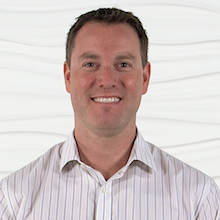Exercise Prescription to Restore Range of Motion Following Shoulder Surgery
April 7, 2021
4 min. read

Restoring shoulder mobility after a surgery is critical to the patients long-term function.
Although differing opinions exist regarding the exact timing of these activities after a surgery, it is clear that certain exercises should be utilized in the clinic and at home.
Range of Motion After Shoulder Surgery Is Safe
Unfortunately, there is some controversy with early ROM after a rotator cuff repair or even a labral repair. Many surgeons are concerned that early ROM, although typically passive in nature, can be detrimental to the repaired tissue. However, it seems as if some of these notions have been refuted and show no difference in outcomes with early ROM versus a delayed rehab. For example, Cuff and Pupello found no significant differences in patient satisfaction, rotator cuff healing, or range of motion between early and delayed groups, when the early rehab group started rehab two days after surgery versus the delayed group, which began therapy six weeks after surgery.1
In a systematic review and meta-analysis, Saltzman, et al., found that better ROM could be achieved with early motion up to one year postoperatively for forward elevation and up to six months for external rotation ROM. The studys authors did note that caution should be utilized in a large tear repair to avoid higher retear rates.2
Keener, et al., showed no apparent advantage or disadvantage of early passive range of motion compared with immobilization with regard to healing or functional outcome in small- or medium-sized rotator cuff repairs. They went on to show that 92 percent of the tears healed after surgery, with no significant difference between the two rehabilitation protocols.3
These are just a few of the many studies currently available that show no differences in outcomes with early motion during physical therapy.
My Philosophy After a Shoulder Surgery
In general, my philosophy is to get people who have had shoulder surgery into rehab as quickly as possible. They are often in pain, confused, and worried about the long-term results of their surgery.
Rehabilitation professionals can answer many of their questions, address their concerns, and provide pain control. Two to three hours of therapy each week is not any more detrimental to the patient than the other 165+ hours they spend not doing therapy. As a physical therapist, my job is to help guide each patients rehab in a safe and efficient manner and to prescribe safe, evidence-based exercises to restore ROM.
Exercises to Help Restore Motion After a Shoulder Surgery
These are a few of the most common and beneficial mobility exercises I prescribe to patients following shoulder surgery. From my perspective, the main focus after most surgeries should be regaining ROM, as this will help improve:
Pain
Capsular mobility
Confidence
I believe it's critically important to get the shoulder moving in multiple planes while maintaining a relaxed position, and that's why I typically choose supine or seated as my preferred positions. I prefer exercises that have also been shown to have minimal rotator cuff EMG activity, especially after a rotator cuff repair.
Exercises I like to use include:
Passive ROM
Golf club AAROM external rotation at 45 degrees
Golf club AAROM external rotation at 90 degrees
Golf club AAROM flexion
Rope and pulleysyes, I still use them and you should too!
Most patients can do these on their own at home, which is critical in the first few weeks after surgery. Here are more suggested rotator cuff exercises including a downloadable rotator cuff exercises pdf to provide to patients or use as an example when creating your own program.
Whats the Takeaway?
As always, make sure the entire rehab team is on board with these exercises. Consult your referring physician to make sure the rehab matches the surgery. You need to fully understand the status of the tissues involved.
Prescribing specific exercises should be done carefully and with a full understanding of the stress on the healing tissues.
I discuss several of these important concepts in my newest Medbridge courses, including:
Understanding Glenohumeral Joint Biomechanics and Exercise Implementation
Rehabilitation Following Rotator Cuff and Labral Repair Surgery
Hopefully, this article and my courses will provide you with the tools you need to critically think about exercise prescription and application to a specific surgery.
Below, watch Lenny Macrina discuss matching shoulder rehabilitation to the surgical procedure in a short clip from his MedBridge course, "Rehabilitation Following Rotator Cuff and Labral Repair Surgery."






